In 2024, the global soft drinks market is marked by unprecedented complexity, unpredictability, and volatility.
Companies like Coca-Cola navigate a turbulent environment shaped by rapid technological advancements, shifting political dynamics, fluctuating economic conditions, evolving consumer preferences, heightened environmental concerns, and stringent legal regulations.
This complicated web of external factors demands a robust analytical framework to decode the various influences on the business landscape.
The PESTEL model emerges as an essential tool for understanding and strategizing within this challenging market. By leveraging PESTEL analysis, stakeholders can gain valuable insights into the external forces impacting Coca-Cola, enabling more informed decision-making and strategic planning in a rapidly changing world.
Coca cola: a fizzy empire

Coca-Cola, often shortened to Coke, is a globally recognized brand synonymous with carbonated soft drinks. Here’s a detailed breakdown of its history, activities, and key figures:
History
Coca-Cola was invented in 1886 by John Stith Pemberton in Atlanta, Georgia, originally as a temperance drink. It was initially marketed as a patent medicine for headaches and nausea.
In 1888, Asa Griggs Candler acquired the rights and began aggressive marketing, leading to explosive growth. The iconic Coca-Cola contour bottle was introduced in 1915. Over time, Coca-Cola expanded its product portfolio and global presence.
Activities
Coca-Cola manufactures, distributes, and markets various non-alcoholic beverages. The company operates through a franchise system, with The Coca-Cola Company producing concentrates, syrups, and beverage bases. Bottling partners then manufacture package, and distribute the final branded beverages.
Coca-Cola’s operating segments:
While Coca-Cola doesn’t officially disclose a precise segmentation of its activities in terms of Strategic Business Units (SBU), we can identify several key segments based on their product portfolio and marketing strategies:
- 1. Sparkling Soft Drinks: This segment represents the core of Coca-Cola’s business, with iconic products like original Coca-Cola, Coca-Cola Zero, and Fanta.
- 2. Still Beverages: This segment includes products like bottled water (Dasani, Chacahua), fruit juices (Minute Maid), sports drinks (Powerade), and iced teas (Fuze Tea).
- 3. Energy Drinks: Coca-Cola owns a range of energy drinks, notably Monster Energy and Burn.
- 4. Coffee and Tea Solutions: This recent segment includes brands like Costa Coffee and Honest Tea, allowing Coca-Cola to cater to the growing demand for premium hot beverages.
- 5. Other Segments: Coca-Cola also explores other market segments like plant-based beverages (AdeS), fresh fruit and vegetable juices (Simply), and CBD-infused products (Vereo).
Competitors
Coca-Cola’s primary competitor is PepsiCo, with its flagship brand Pepsi and other soft drinks like Mountain Dew. Other beverage companies, such as Keurig Dr Pepper, Monster Beverage, and regional players, also compete for market share.
Suppliers
Coca-Cola relies on a vast network of suppliers for ingredients, including caramel coloring, caffeine, sugar or high-fructose corn syrup (depending on the region), fruit flavors and extracts, and packaging materials like aluminum cans and plastic bottles.
Customers
Coca-Cola’s customer base is vast and global, encompassing retail stores (supermarkets, convenience stores), restaurants and fast-food chains, hotels, movie theaters and entertainment venues, vending machine operators, and individual consumers.
Strategies
Coca-Cola’s key strategies include product innovation and constantly developing new beverage options alongside its core brand.
The company invests heavily in global marketing campaigns to maintain brand recognition and loyalty.
It maintains a robust franchise system for efficient global distribution and market access. Additionally, Coca-Cola focuses on sustainability initiatives, including eco-friendly packaging, water conservation, and responsible sourcing.
Key Figures (as of 2024)
Coca-Cola offers over 500 beverage brands, including Coca-Cola, Sprite, Fanta, and Minute Maid. It serves billions of consumers worldwide, with annual sales exceeding USD 48 billion. Coca-Cola products are sold in over 200 countries and territories, and the company employs over 700,000 people globally, including bottling partners.
Additional Points
Coca-Cola faces increasing scrutiny over the health implications of sugary drinks and the environmental impact of plastic packaging.
The company is actively reformulating products to reduce sugar content and exploring sustainable packaging solutions. Mergers and acquisitions remain a key growth strategy, exemplified by Coca-Cola’s acquisition of Costa Coffee to expand its beverage portfolio.
Coca-Cola’s success story is built on a combination of innovative products, aggressive marketing, and a strong global distribution network.
As consumer preferences and environmental concerns evolve, Coca-Cola will need to adapt its strategies to ensure its continued dominance in the beverage industry.
Political factors
The political environment presents both promising possibilities and challenges for Coca-Cola in the global soft drinks industry. Here’s a breakdown of key factors:
Current Opportunities:
Trade Agreements:
Trade agreements that reduce tariffs and simplify regulations on beverage exports can open new markets or expand existing ones for Coca-Cola, potentially increasing sales and market share.
Example:
The recent trade agreement between the US and Mexico eliminated tariffs on US-made soft drinks entering Mexico, potentially benefiting Coca-Cola’s sales in that market.
Relaxation of Regulations:
Changes in regulations related to sugar content or advertising restrictions could benefit Coca-Cola if they allow for more flexibility in product formulation or marketing strategies.
Example:
Some countries are considering relaxing restrictions on advertising sugary drinks to children, which could potentially benefit Coca-Cola’s marketing efforts.
Government Investment in Infrastructure:
Investments in infrastructure, such as improved transportation networks in developing countries, can help Coca-Cola distribute its products to new customers.
Statistic:
The World Bank estimates that developing countries will need to invest $1.5 trillion annually in infrastructure by 2030.
Potential Opportunities:
Partnerships with Public Health Initiatives:
Collaboration with governments on public health initiatives like promoting healthy drink options could improve Coca-Cola’s image and potentially lead to relaxed regulations.
Advocacy for Sustainable Practices:
Lobbying for policies that promote recycling or sustainable packaging practices can position Coca-Cola as an environmentally responsible company and potentially gain favor with governments.
Statistic:
A study by Nielsen in 2023 found that 66% of global consumers are willing to pay more for sustainable products.
Current Threats:
Sugar Taxes:
Governments are increasingly imposing sugar taxes on sugary drinks to address public health concerns like obesity and diabetes. This can lead to increased production costs for Coca-Cola and potentially higher consumer prices, impacting sales.
Example:
Mexico has implemented a tax on sugary drinks, which has led to a decline in sales of these beverages in the country.
Advertising Restrictions:
Governments may impose stricter regulations on advertising sugary drinks, particularly those targeted towards children. This can limit Coca-Cola’s marketing reach and potentially hinder brand awareness among younger demographics.
Statistic:
The World Health Organization (WHO) recommends restrictions on the marketing of unhealthy foods and beverages to children.
Political Instability:
Political instability in certain regions can disrupt Coca-Cola’s supply chains, distribution networks, and overall business operations in those areas.
Example:
The ongoing conflict in Ukraine has created logistical challenges for companies operating in the region, including beverage companies.
Economic factors
Opportunities:
Growing Middle Class:
The expanding middle class in developing economies is creating a new generation of consumers with disposable income and a desire for convenient and refreshing beverages. This translates to increased demand for soft drinks, potentially benefiting Coca-Cola.
Statistic: The World Bank estimates that the global middle class will reach 3.2 billion people by 2025.
Emerging Markets:
Developing economies with growing populations offer Coca-Cola significant growth potential. Expanding distribution networks and adapting products to local tastes can unlock new markets and customer segments.
Example:
Coca-Cola has seen strong sales growth in Africa in recent years, driven by increasing urbanization and disposable income.
Economic Recovery:
A strong global economic recovery can lead to increased consumer spending, potentially boosting demand for non-essential items like sugary drinks.
Statistic: The International Monetary Fund (IMF) forecasts global economic growth of 3.6% in 2024.
Premiumization:
Consumers are increasingly willing to pay a premium for high-quality, functional, or niche beverages. Coca-Cola can capitalize on this trend by offering premium versions of existing products or launching new lines focused on specific health benefits or unique flavors.
Example:
Coca-Cola has introduced premium versions of its core brand like Coca-Cola Zero Sugar Stevia and Coca-Cola Signature Mixers, catering to health-conscious and cocktail-loving consumers.
E-commerce Expansion:
The growing popularity of e-commerce platforms presents an opportunity for Coca-Cola to expand its online sales channels and reach new customer segments, particularly in developing economies with high internet penetration.
Statistic: Global e-commerce sales are projected to reach USD 6.5 trillion by 2024.
Threats:
Rising Inflation:
Inflationary pressures can lead to increased costs of raw materials, packaging, and transportation, impacting Coca-Cola’s profit margins. The company may need to raise prices, potentially leading to decreased consumer demand.
Statistic:
Global inflation rates are expected to remain elevated in 2024 due to supply chain disruptions and the war in Ukraine [World Bank, “Global Economic Prospects,” retrieved from worldbank.org, May 26, 2024]
Currency Fluctuations:
Fluctuations in exchange rates can impact Coca-Cola’s profitability in different regions. To protect its financial performance, the company needs to manage currency risk.
Example:
A strengthening US dollar can make Coca-Cola’s exports from the US more expensive in foreign markets, impacting sales.
Economic Downturn:
An economic slowdown can lead to decreased consumer spending, potentially impacting demand for non-essential items like sugary drinks.
Example:
The COVID-19 pandemic led to a decline in soft drink sales due to economic hardship and lockdowns in many countries.
Social factors
The social and cultural landscape presents both promising opportunities and challenges for Coca-Cola in the international soft drinks industry.
Opportunities:
Health and Wellness Trend:
Growing consumer focus on health and wellness creates opportunities for Coca-Cola to offer healthier beverage options. This can include low-calorie or sugar-free versions, drinks with added vitamins or minerals, or products with functional benefits like enhanced hydration or energy.
Example: Coca-Cola has launched products like Coca-Cola Zero Sugar and Vitaminwater to cater to this trend.
Localization and Customization:
Adapting products and marketing strategies to local preferences and cultural nuances can resonate better with consumers in different markets.
Statistic: A study by Accenture found that 75% of global consumers are more likely to buy from brands that understand their cultural background.
Experiential Marketing:
Engaging consumers through interactive experiences and events can build brand loyalty and create positive associations with Coca-Cola products.
Example: Coca-Cola has sponsored major sporting events and music festivals, creating memorable experiences for consumers.
Sustainability Focus:
Consumers are increasingly concerned about environmental and social responsibility. Coca-Cola can capitalize on this trend by focusing on sustainable packaging, water conservation practices, and ethical sourcing of ingredients.
Statistic: A Nielsen study found that 68% of global consumers are willing to pay more for sustainable brands.
Community Engagement:
Supporting local communities and initiatives can enhance Coca-Cola’s brand image and create goodwill among consumers.
Example: Coca-Cola could partner with NGOs on water access projects in developing countries, demonstrating their commitment to social responsibility.
Digital Marketing and Social Media:
Leveraging social media platforms and influencer marketing can connect with younger demographics and create engaging content around Coca-Cola products.
Statistic: According to Statista.com, there are over 4.6 billion active social media users worldwide, a vast potential audience for Coca-Cola’s marketing efforts.
Threats:
Negative Health Perception:
Sugary drinks are increasingly linked to obesity, diabetes, and other health problems. Public health campaigns and media attention can negatively impact consumer perception of Coca-Cola products.
Example:
A recent study published in the British Medical Journal linked sugary drink consumption to an increased risk of heart disease.
Shifting Consumer Preferences:
Consumers are increasingly seeking healthier alternatives like water, tea, plant-based beverages, and kombucha. If Coca-Cola doesn’t adapt its offerings, this trend threatens its market share.
Statistic: A report by Grand View Research projects the global plant-based beverage market to reach USD 50 billion by 2027.
Focus on Artificial Ingredients:
Consumers are wary of artificial sweeteners, flavors, and colors used in some Coca-Cola products. This can lead to a preference for “natural” or organic alternatives.
Statistic: A 2023 survey by Label Insight found that 73% of global consumers are willing to pay more for products with clean labels.
Cultural Sensitivity Issues:
Marketing campaigns insensitive to local cultures or traditions can backfire and damage Coca-Cola’s brand image.
Example:
A recent Coca-Cola advertisement featuring a local celebrity in a certain region was deemed disrespectful to a religious symbol, leading to boycotts and social media backlash.
Rise of Anti-Corporate Sentiment:
Some consumers view Coca-Cola as a large, multinational corporation with a negative environmental and social impact. This can lead to boycotts and negative brand perceptions.
Statistic: A study by Edelman found that 64% of global consumers believe businesses need to do more to address social and environmental issues.
Disruption by Small, Innovative Brands:
Small, independent beverage companies with a focus on organic ingredients, unique flavors, and sustainability are gaining traction with consumers. This can threaten Coca-Cola’s market share in certain segments.
Example:
Craft soda brands are experiencing significant growth in the US, offering consumers a wider variety of flavors and ingredients compared to traditional soft drinks.
Technological factors
The technological environment presents both exciting possibilities and significant challenges for Coca-Cola in the international soft drinks industry. Here’s a breakdown of key areas:
Opportunities:
E-commerce Platforms:
The rise of e-commerce platforms like Amazon and Alibaba offers Coca-Cola new avenues to reach consumers directly and expand its online sales channels.
Statistic: Global e-commerce sales are projected to reach $6.5 trillion by 2024, according to Statista.com.
Data Analytics and Consumer Insights:
Leveraging big data analytics can provide Coca-Cola with valuable insights into consumer preferences, buying habits, and marketing effectiveness, allowing for more targeted product development and marketing campaigns.
Example: Coca-Cola can analyze social media trends and online reviews to identify emerging consumer preferences for specific flavors or ingredients.
Automated Supply Chains and Logistics:
Implementing automation in manufacturing, warehousing, and distribution can improve efficiency and reduce costs throughout the supply chain.
Example: Coca-Cola can invest in automated bottling lines and self-driving trucks for deliveries to optimize logistics.
Artificial Intelligence (AI) and Personalization:
Utilizing AI to personalize the customer experience can create targeted marketing campaigns, product recommendations, and loyalty programs.
Example: Coca-Cola could develop AI-powered chatbots that recommend beverages based on individual customer preferences.
Blockchain Technology:
Blockchain technology can improve supply chain transparency and traceability, allowing consumers to track the origin of ingredients and ensure ethical sourcing practices.
Example: Coca-Cola could partner with blockchain companies to track the journey of cocoa beans from farm to factory, promoting ethical sourcing and sustainability.
Subscription Services:
Subscription services for regular delivery of Coca-Cola products can increase customer convenience and loyalty.
Example: Coca-Cola could offer a subscription box with a curated selection of beverages delivered directly to consumers’ homes.
The ever-evolving technological landscape presents significant challenges for Coca-Cola, alongside the exciting opportunities we discussed earlier. Here’s a breakdown of key threats:
Threats:
Cybersecurity Threats:
Coca-Cola’s reliance on technology across its operations exposes it to cyberattacks. These attacks can be costly and damaging, leading to:
- Data Breaches: Exposure of sensitive customer information, trade secrets, or marketing strategies. For example, In 2021, a major ransomware attack disrupted operations at JBS, a leading meat producer, highlighting the vulnerability of global food and beverage companies to cyberattacks.
- Production Disruptions: Hacking into production control systems can halt production lines, leading to lost revenue and product shortages.
- Reputation Damage: News of a cyberattack can damage Coca-Cola’s brand image and erode consumer trust. A report by Cybersecurity Ventures predicts global cybercrime costs to reach USD 10.5 trillion annually by 2025.
Counterfeit Products: Advancements in technology make it easier to create high-quality fakes. These can:
Reduce Sales: Consumers buying cheaper counterfeits impact Coca-Cola’s revenue.
Damage Brand Reputation: Poor-quality fakes can create negative associations with the brand.
Health Risks:
Counterfeits may contain harmful ingredients or be produced in unsanitary conditions, posing health risks to consumers.
Example:
The rise of online marketplaces makes it easier for counterfeiters to sell fake beverages, requiring Coca-Cola to actively monitor online platforms and collaborate with authorities to take down counterfeit listings.
Rapid Technological Change:
Staying ahead of the curve is crucial. Here’s how rapid change can pose challenges:
Outdated Technology:
Falling behind on technological advancements can make Coca-Cola less efficient and less competitive.
Missed Opportunities:
Failing to adapt to new technologies can limit Coca-Cola’s ability to capitalize on emerging trends in the market.
Talent Gap:
The rapid evolution of technology can create a skills gap within the workforce, requiring continuous training and recruitment efforts.
Statistic: The half-life of a technological skill is estimated to be around five years, highlighting the need for businesses to continuously learn and adapt.
Rise of Disruptive Technologies:
New technologies could change consumer behavior and disrupt traditional beverage distribution models. Examples include:
Direct-to-Consumer (D2C) Beverage Startups:
Startups leveraging technology to offer personalized, subscription-based beverage delivery models could threaten Coca-Cola’s market share.
Lack of Agility:
Large corporations like Coca-Cola can struggle to adapt quickly to changing technological landscapes, which could disadvantage them compared to smaller, more nimble startups.
Environmental factors
Opportunities:
Sustainability Initiatives:
Consumers are increasingly concerned about environmental responsibility, and Coca-Cola can capitalize on this trend by focusing on several key areas.
One major area is sustainable packaging. Coca-Cola is developing eco-friendly packaging solutions, such as refillable bottles, incorporating recycled content in plastic bottles, and using compostable materials. For instance, the company has set a goal to use 100% recycled plastic in its packaging by 2030.
Another critical focus is water conservation. Coca-Cola is implementing water-saving practices throughout its production process and promoting water stewardship initiatives in the communities where it operates.
This is especially significant given the beverage industry’s high water usage. According to a study by The Nature Conservancy, producing a liter of soda can require up to 300 liters of water.
Renewable Energy:
Shifting towards renewable energy sources for powering production facilities can reduce Coca-Cola’s carbon footprint.
Example: Coca-Cola has invested in solar power installations at some of its bottling plants.
Circular Economy:
Developing a circular economy model for packaging can significantly minimize waste and reduce environmental impact. One approach is through bottle deposit programs, which encourage consumers to return used bottles for recycling or refilling.
Many countries have implemented successful bottle deposit programs that have significantly increased recycling rates for plastic bottles.
Another important strategy is forming partnerships with waste management companies. By collaborating with these companies, Coca-Cola can help develop an efficient recycling infrastructure and ensure the proper disposal of used packaging.
These initiatives are essential for creating a sustainable, circular economy in the beverage industry.
Threats:
Plastic Pollution
Plastic waste from beverage bottles is a major contributor to global plastic pollution, harming marine ecosystems and wildlife. Coca-Cola faces significant pressure to address this issue from multiple fronts.
One major source of pressure is government regulations. Governments are increasingly implementing bans or restrictions on single-use plastics, which can impact Coca-Cola’s packaging options in certain markets. For example, the European Union has banned single-use plastic straws, plates, and cutlery as of 2021.
Additionally, Coca-Cola must contend with negative consumer perception. As consumers become more aware of the environmental impact of plastic waste, there is a growing risk of negative brand perception.
A Nielsen study found that 66% of global consumers are willing to pay more for sustainable products. This trend highlights the increasing importance of sustainable practices in maintaining consumer trust and loyalty.
Water Scarcity:
The beverage industry relies heavily on freshwater resources, and in regions facing water scarcity, Coca-Cola’s operations can strain local water supplies. This dependency can lead to several challenges.
One significant issue is community tensions. Competition for water resources between Coca-Cola and local communities can create tensions and social unrest. For example, Coca-Cola has faced criticism in India for its water usage in some bottling plants located in water-stressed regions.
Another challenge is regulatory scrutiny. Governments in water-stressed regions may impose stricter regulations on water usage by businesses, which can impact Coca-Cola’s production capabilities. These regulations are intended to ensure fair distribution and sustainable management of water resources.
Legal factors
The legal landscape presents both possibilities for growth and significant challenges for Coca-Cola in the international soft drinks industry. Here’s a breakdown of key areas:
Opportunities:
Standardized Regulations:
International efforts to harmonize food and beverage regulations can streamline Coca-Cola’s operations across different markets.
Example: The Codex Alimentarius Commission sets international food safety standards, which can benefit Coca-Cola by ensuring consistent product quality across borders.
Intellectual Property Protection:
Strong intellectual property (IP) protection for trademarks and recipes can safeguard Coca-Cola’s brand identity and prevent competitors from copying their products.
Statistic: Coca-Cola invests heavily in protecting its intellectual property, holding trademarks for its iconic logo and various product names.
Favorable Trade Agreements:
Trade agreements that remove tariffs and other trade barriers can make it easier and cheaper for Coca-Cola to export its products to new markets.
Example: The North American Free Trade Agreement (NAFTA) has facilitated trade between the US, Canada, and Mexico, benefiting Coca-Cola’s operations in these regions.
Threats:
Antitrust Scrutiny:
Coca-Cola’s dominant market position in certain regions can attract antitrust scrutiny from regulators concerned about fair competition.
Example: The European Commission has investigated Coca-Cola for alleged anti-competitive practices in the past.
Sugar Taxes and Regulations:
Governments are increasingly implementing sugar taxes and advertising restrictions on sugary drinks to address public health concerns. These measures can pose several challenges for Coca-Cola.
One challenge is the potential increase in production costs. Sugar taxes can lead to higher production costs for Coca-Cola, potentially impacting profit margins. For instance, Mexico’s tax on sugary drinks has led to a decline in sales for Coca-Cola and other soft drink companies in the country.
Another area for improvement is the limitation on marketing reach. Restrictions on advertising sugary drinks can limit Coca-Cola’s ability to reach consumers and promote its products.
These regulations are designed to reduce the consumption of sugary drinks and improve public health outcomes, but they also require Coca-Cola to adapt its marketing strategies in affected markets.
Product Liability Lawsuits:
Coca-Cola faces the risk of lawsuits from consumers alleging health problems caused by consuming its products.
Example: Coca-Cola has been sued in the past over claims that its sugary drinks contribute to obesity and other health problems.
Evolving Regulatory Landscape:
Coca-Cola can find it challenging to keep up with constantly evolving regulations related to food safety, labeling, and advertising.
Statistic: The global food and beverage industry is subject to a complex web of regulations that vary from country to country.
Conclusion
Coca-Cola operates in a dynamic global soft drinks industry shaped by various macro-environmental factors. A thorough PESTEL analysis reveals significant opportunities and threats across the political, economic, social, technological, ecological, and legal landscapes.
Seizing Opportunities
Coca-Cola can capitalize on growth in emerging markets by allocating resources to expand distribution networks and adapt products to local tastes in developing economies with rising disposable incomes and growing middle classes.
Embracing technological advancements is crucial; the company should invest in e-commerce platforms, leverage data analytics for targeted marketing, and explore AI for personalization and blockchain for supply chain transparency.
Championing sustainability is another key opportunity. Coca-Cola can implement eco-friendly packaging solutions, prioritize water conservation, and invest in renewable energy sources to demonstrate environmental responsibility and cater to eco-conscious consumers.
Additionally, developing healthier beverage options can address the growing demand for alternatives by offering low-calorie or sugar-free versions, drinks with added vitamins or minerals, and functional beverages promoting hydration or energy.
Investing in social responsibility is essential for building trust and positive brand association. Coca-Cola can support local communities, promote ethical sourcing practices, and address concerns about sugar content and marketing practices.
Countering Threats
To mitigate the impact of economic downturns, Coca-Cola should diversify its product portfolios and market presence to minimize reliance on any single economic factor and explore cost-efficiency measures to maintain profitability.
Combatting negative health perceptions is also vital; the company should invest in product research and development to offer healthier options and engage in transparent communication about ingredients and sugar content.
Staying ahead of rapid technological change requires fostering a culture of innovation, establishing partnerships with technology companies, and continuously training employees to adapt to new technologies that disrupt the industry.
Navigating the evolving legal landscape involves maintaining a strong compliance culture to ensure adherence to regulations, advocating for fair trade practices, and staying informed about evolving regulations regarding labeling, advertising, and sugar content.
By implementing these strategic prescriptions, Coca-Cola can position itself as a global leader that thrives by not only meeting consumer needs but also addressing the broader social, environmental, and technological concerns shaping the future of the soft drinks industry.
Coca-Cola’s ability to adapt, innovate, and navigate the complexities of the macro environment will be crucial for its continued success in the years to come.
Read also: SWOT analysis of Coca-cola in 2024.
PESTEL analysis examples 2024
To better understand the PESTEL analysis, we invite you to read our recent free examples of the Pestel framework.
PESTEL analysis of British Airways
Click here to read our example of British Airways PESTEL analysis.
PESTEL analysis of Primark
Click here to read our example of Primark’s PESTEL analysis.
PESTEL analysis of Zara
Click here to read our example of Zara’s PESTEL analysis.
PESTEL analysis of DHL
Click here to read our example of DHL’s PESTEL analysis.
PESTEL analysis of FedEx
Click here to read our example of FedEx’s PESTEL analysis.
PESTEL analysis of Chipotle
Click here to read our example of Chipotle’s PESTEL analysis.
PESTEL analysis of Brazil
Click here to read our example of Pestel’s analysis of Brazil.
PESTEL analysis of Spotify
Click here to read our example of Spotify Pestel analysis.
Chick-fil-A PESTEL Analysis
Click here to read our example of Chick-fil-A Pestel analysis.
Costco PESTEL Analysis
Click here to read our example of Costco Pestel analysis.
Microsoft PESTEL Analysis
Click here to read our example of Microsoft Pestel analysis.
Disney PESTEL Analysis
Click here to read our example of Disney Pestel analysis.
Airline Industry PESTEL Analysis
Click here to read our example of the Airline industry Pestel analysis.
Walmart Pestel Analysis
Click here to read our example of Walmart Pestel analysis.
Amazon Pestel Analysis
Click here to read our example of Amazon Pestel analysis.
McDonald’s Pestel Analysis
Click here to read our example of the Netflix Pestel analysis.
Netflix Pestel Analysis
Click here to read our example of the Netflix Pestel analysis.
Apple Pestel Analysis
Click here to read our example of the Apple Pestel analysis.
Twitter Pestel Analysis
Click here to read our example of the Twitter Pestel analysis.
Facebook Pestel Analysis
Click here to read our example of the Facebook Pestel analysis.
Pestel analysis of the Social Media industry
Click here to read our example of the Pestel analysis of the Social Media industry.
Ikea Pestel Analysis
Click here to read our example of the IKEA Pestel analysis.
Tesla Pestel Analysis
Click here to read our example of the TESLA Pestel analysis.

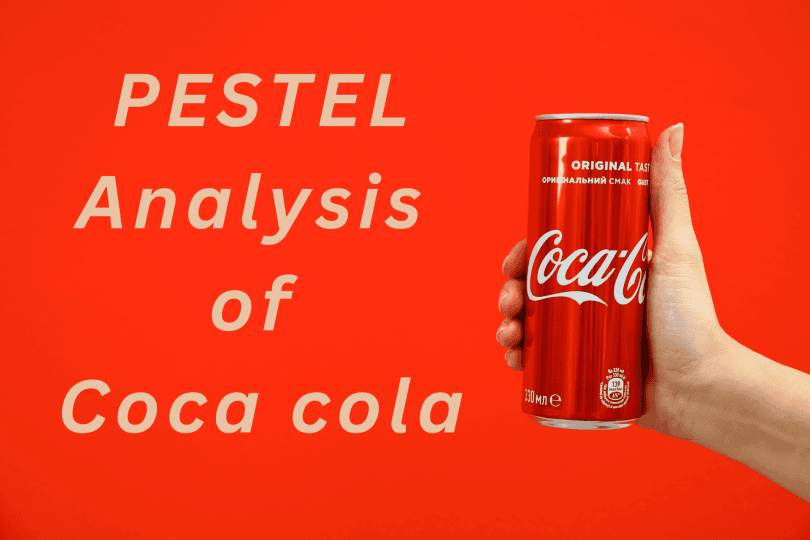

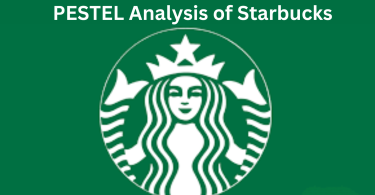
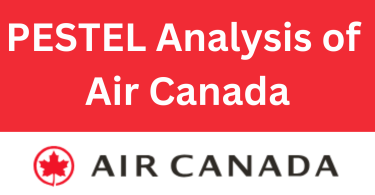
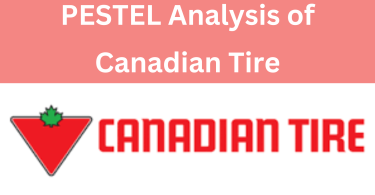

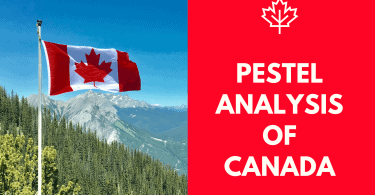


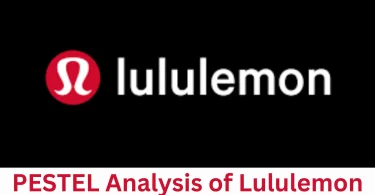

Leave a Comment